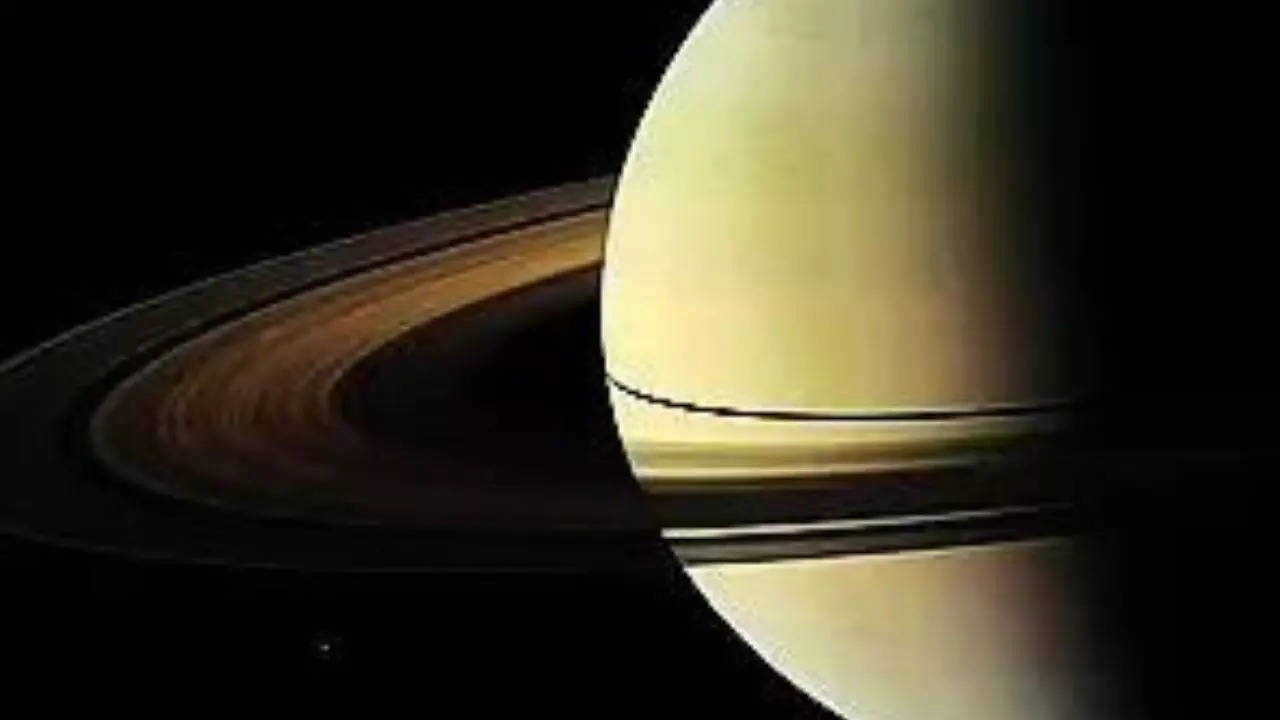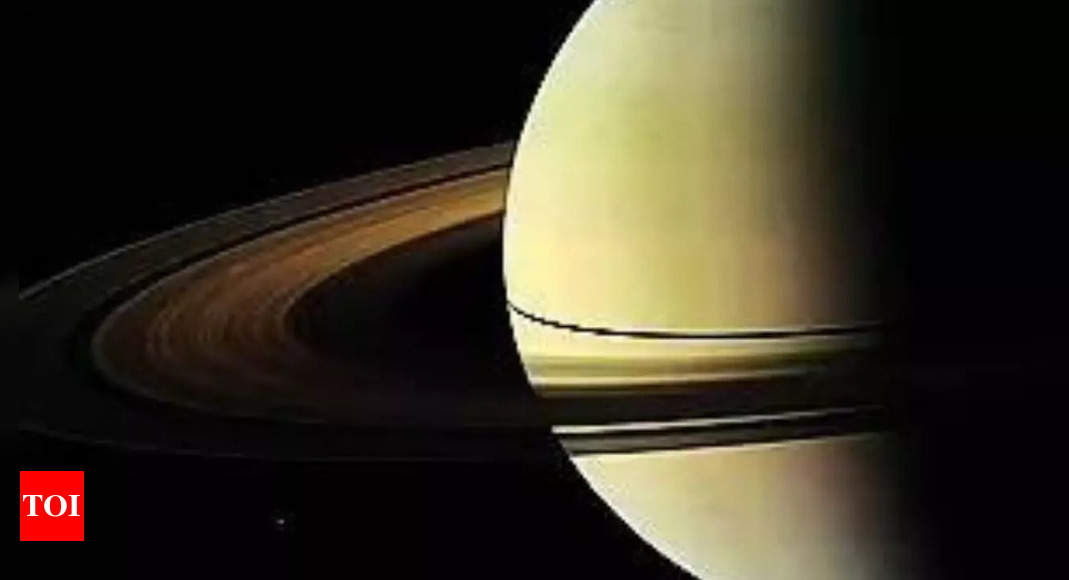
Try to imagine Saturn without its signature rings. Now picture two large icy moons shifting closer together little by little until – boom. Chaos. What was solid is now fluid. Diamantine shards scatter into the darkness. Many icy fragments tumble close to Saturn, remain there and dance around the gas giant in unison, ultimately forging the heavyweight body’s exquisite discs.
This spectacular scene comes from an attempt to answer one of the greatest mysteries of the solar system: Where did Saturn’s rings come from, and when did they form? A study, published this week in The Astrophysical Journal, leans into the notion that they are not billions of years old, but were crafted in the recent astronomic past – perhaps by the collision of two modestly sized frost-flecked moons only a few hundred million years ago.
“I’m sure it would have been great to see if the dinosaurs had had a good enough telescope,” said Jacob Kegerreis, a research scientist at Nasa’s Ames Research Center in Mountain View, California, and one of the study’s authors.
Kegerreis and his colleagues tested the younger-rings hypothesis using Britain’s Distributed Research Using Advanced Computing facility. This supercomputing system allowed the researchers to repeatedly re-create this cataclysm with greater detail along with its immediate aftermath, finding that this origin story is plausible.
The team’s simulations may aid scientists in studying not only the genesis of Saturn’s rings, but of all worlds. With its myriad satellites, Saturn “can be considered a mini-solar system,” said Scott Sheppard, an astronomer at the Carnegie Institution for Science in Washington, who was not involved with the new study. “Saturn is a perfect laboratory to understand how planets and moons form.”
At 4.5 billion years old, Saturn is almost as senior as the sun. Its rings were thought to be similarly ancient until the Cassini spacecraft studied the planet up close for 13 years. Across billions of years they should have been sullied by other dusty space debris. But the icy rings appeared too shiny and clean to be primeval. This along with other evidence has convinced many scientists who study Saturn that the rings appeared a few hundred million years ago.
This spectacular scene comes from an attempt to answer one of the greatest mysteries of the solar system: Where did Saturn’s rings come from, and when did they form? A study, published this week in The Astrophysical Journal, leans into the notion that they are not billions of years old, but were crafted in the recent astronomic past – perhaps by the collision of two modestly sized frost-flecked moons only a few hundred million years ago.
“I’m sure it would have been great to see if the dinosaurs had had a good enough telescope,” said Jacob Kegerreis, a research scientist at Nasa’s Ames Research Center in Mountain View, California, and one of the study’s authors.
Kegerreis and his colleagues tested the younger-rings hypothesis using Britain’s Distributed Research Using Advanced Computing facility. This supercomputing system allowed the researchers to repeatedly re-create this cataclysm with greater detail along with its immediate aftermath, finding that this origin story is plausible.
The team’s simulations may aid scientists in studying not only the genesis of Saturn’s rings, but of all worlds. With its myriad satellites, Saturn “can be considered a mini-solar system,” said Scott Sheppard, an astronomer at the Carnegie Institution for Science in Washington, who was not involved with the new study. “Saturn is a perfect laboratory to understand how planets and moons form.”
At 4.5 billion years old, Saturn is almost as senior as the sun. Its rings were thought to be similarly ancient until the Cassini spacecraft studied the planet up close for 13 years. Across billions of years they should have been sullied by other dusty space debris. But the icy rings appeared too shiny and clean to be primeval. This along with other evidence has convinced many scientists who study Saturn that the rings appeared a few hundred million years ago.
Source link

